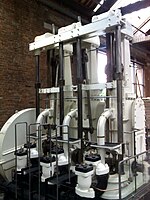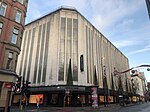Lowry Hotel
Buildings and structures in SalfordHotels established in 2001Hotels in Greater Manchester

The Lowry Hotel is located by the River Irwell in Salford, Greater Manchester, England. The five-star hotel is named after the artist L. S. Lowry. Although within the boundaries of the City of Salford, it is close to Manchester city centre and is known as "The Lowry Hotel Manchester". Upon opening, Marco Pierre White was the overseeing chef of the River Room restaurant.
Excerpt from the Wikipedia article Lowry Hotel (License: CC BY-SA 3.0, Authors, Images).Lowry Hotel
Clermont-Ferrand Square, Salford City Centre
Geographical coordinates (GPS) Address Nearby Places Show on map
Geographical coordinates (GPS)
| Latitude | Longitude |
|---|---|
| N 53.482777777778 ° | E -2.2508333333333 ° |
Address
Clermont-Ferrand Square
Clermont-Ferrand Square
Salford, City Centre
England, United Kingdom
Open on Google Maps











